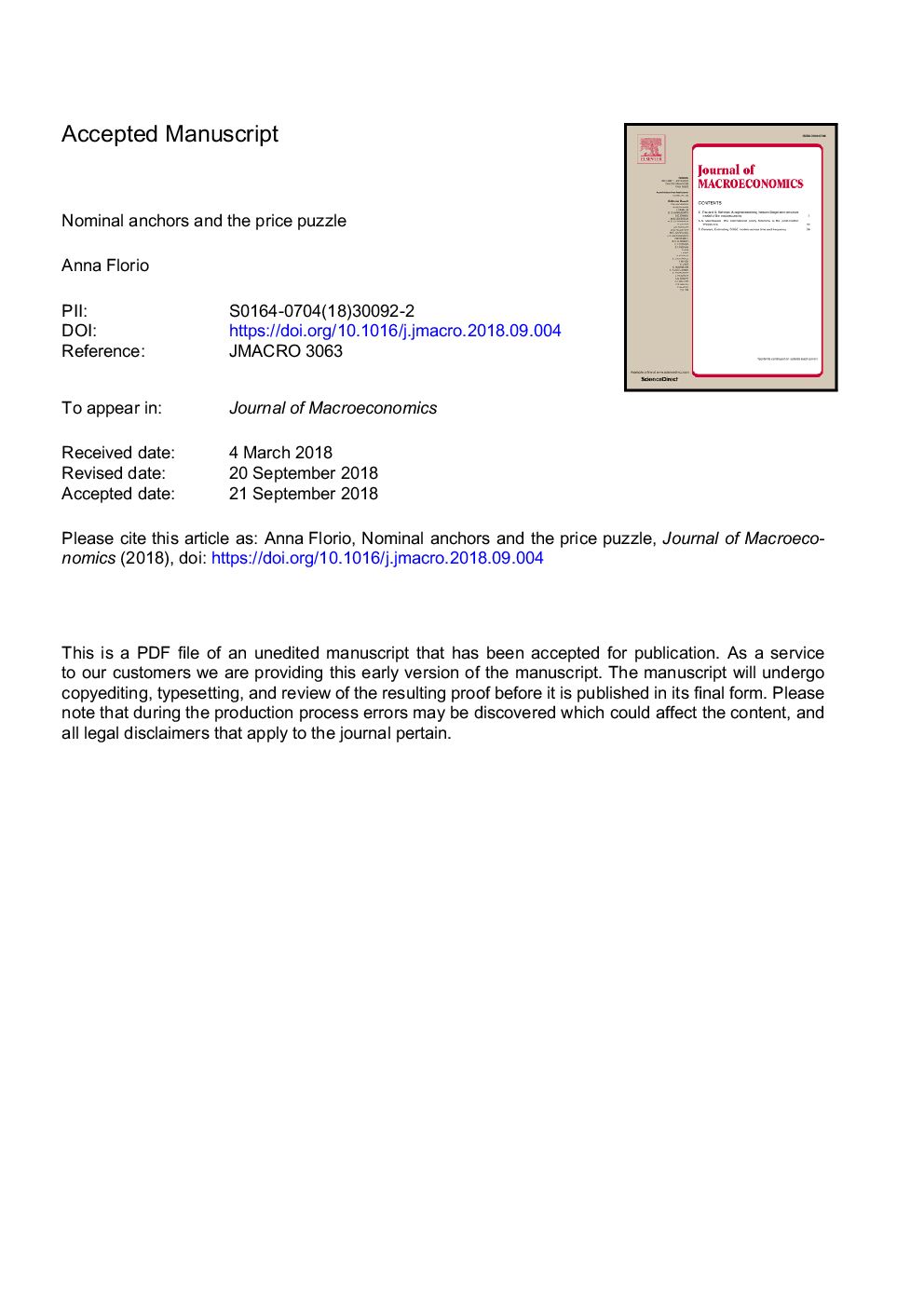| Article ID | Journal | Published Year | Pages | File Type |
|---|---|---|---|---|
| 11031333 | Journal of Macroeconomics | 2018 | 29 Pages |
Abstract
Looking at the pre-Great Recession period, employing a VAR analysis, we compare the behavior of prices after a monetary policy shock in countries with clearly defined nominal anchors (Australia, Canada, New Zealand, Sweden, Switzerland, United Kingdom and EMU) with their behavior in countries that, at that time, did not possess any such anchor (Japan and United States). While for this last group we find evidence of a price puzzle (i.e. the positive response of prices to a negative monetary policy shock), in the first, once this anchor was set, we do not detect such a perverse dynamic. We argue that in those countries, characterised by clearly defined nominal anchors, the central bank manages to anchor inflation expectations thus ruling out the persistent increase in the price level.
Related Topics
Social Sciences and Humanities
Economics, Econometrics and Finance
Economics and Econometrics
Authors
Anna Florio,
